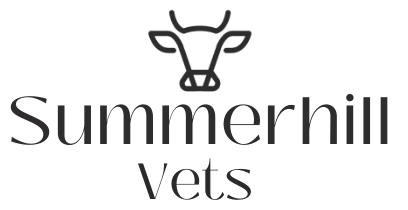As the number of cows in dairy herds continues to increase, the importance of herd health increases exponentially. More cows mean more sick animals and more money lost if there is a disease outbreak. Facilities and labour are often an afterthought when expanding a herd and, in a system that is already creaking at the seams, a breakdown in herd health can have devastating results.
So, what do we need to consider when increasing cow numbers? If buying in animals in order to expand, homework needs to be done, even before agreeing a purchase price. Kgs of milk solids and EBI are often all that is focused on, but, without a healthy herd, these figures are irrelevant
The vaccination history of the source herd should be obtained in detail – what vaccines were used and when? IBR, Lepto, Salmonella and BVD vaccination status should all be determined. If you buy animals that are not vaccinated, they should be quarantined until they have been brought into line with the vaccinations currently used in your herd. Take IBR for example. The reality is, if you are buying in animals from other herds, both your herd and the animals being purchased should be vaccinated for IBR. IBR is like the cold sore virus. It hides out in the body until stress and/or a compromised immune system allow it to come to the fore. Purchased animals should ideally have their IBR vaccine up to date before movement. Transport alone is stressful enough to cause an IBR outbreak. Equally, the stress of mixing new animals into an already established herd makes for ideal conditions for the spread of IBR. Reduced milk yield, early embryonic death, pneumonia and potentially death are all synonymous with IBR. Twice yearly vaccination is advised for herds that are expanding by buying in stock.
Lameness is often completely overlooked when expanding a herd. The most devastating lameness condition in dairy herds at present is Mortellaro. This is a digital dermatitis that most often affects the soft skin at the back of the heel. It looks like a small ulcer in the early stages and progresses to a raised, hairy wart like lesion. It is difficult to cure – affected cows are in a lot of pain with a resulting significant reduction in milk yield and a knock affect on fertility. The problem with Mortellaro is that it is extremely contagious. A wet and dirty environment makes for ideal conditions for the survival and spread of this disease. Cows or heifers that are being purchased should be very closely examined for any signs of Mortellaro. Feet should be washed thoroughly and examined. This is a condition that you do not want to introduce into a healthy herd.
Mastitis and high SCC cows can have a crippling effect on profits in an expanding herd. Only cows from a milk recorded herd and that show consistently low cell count should be introduced into your herd. Even then, after arrival, clusters should be dipped after each milking until each cow that is introduced has a milk sample analysed for SCC.
Johnes disease is being talked about more frequently of late. It causes scour and chronic weight loss in adult cattle. It is spread by infected cattle to young calves, most commonly at calving time. To avoid introducing this disease to your herd, only stock from a Johnes free herd should be bought in. Neospora, which is a disease that can cause abortion and infertility, should also be avoided. Only animals that test negative should be purchased.
Knowing the mineral status of your own land as well as that of your cows is vital when increasing numbers. This will allow you to supplement cows and heifers with minerals such as copper, Iodine or selenium if required.
Facilities on farm can be the single greatest contributor to a break down in the health status of any herd. Lack of feed space and cubicle space can lead to diseases such as milk fever and ketosis around calving. Also, the stress of having to compete for space can lead to increased lameness, abortions or the spread of diseases such as IBR. Not enough space in calving pens and lack of individual calving boxes can result in increased calf losses and an increase in conditions such as retained placentas and mastitis. Similarly we all know that a lack of adequate calf rearing facilities is a recipe for disaster.
Other things to consider for the spring ahead if expanding include the number of extra bulls/vasectomised bulls will be needed for the breeding season. Is the water supply to paddocks sufficient for the increased number of cows? Do road way surfaces need to be improved? Do paddock entrances need to be improved? Is the parlour collecting yard big enough to hold the increased cow numbers? Is another labour unit required?
It is never too late to carry out a full herd health audit of your herd and farm, even if you are currently in the middle of increasing cow numbers. Your vet will be more than happy to discuss in detail any areas of concern and make recommendations where required.
- A vaccination strategy and a parasite control programme should be devised immediately for the year ahead.
- A disease monitoring programme should be implemented, whereby your herd is continuously monitored for the presence of the diseases discussed above
- A checklist of information and tests required for stock that will be purchased should be compiled and only after all the boxes are ticked, should stock be brought onto your farm.
- A full audit of facilities should be carried out and at a minimum, a plan should be drawn up for immediate improvements where needed.
Buying the cows/heifers is the easy bit. Keeping the herd healthy and therefore profitable can be a lot more difficult.




